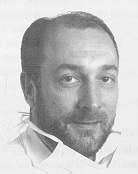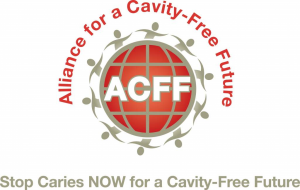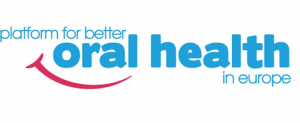
NEWSLETTER Number Two June 1999
EUROPEAN JOURNAL OF PAEDIATRIC DENTISTRY (EJPD)
EXECUTIVE BOARD MEETING
INTERNATIONAL SYMPOSIUM ON RESTORATIVE PAEDIATRIC DENTISTRY
REPORT FROM THE 8th CONTINUING EDUCATION SEMINAR OF THE HELLENIC SOCIETY OF PAEDIATRIC DENTISTRY
ABSTRACTS
ADVERTISING
 Dear Colleagues,
Dear Colleagues,
Spring 1999 was extremely fruitfull for the EAPD!
The first of two Board Meetings was held in Brussels on March 19th. During an eight hour meeting we discussed the most pending tasks, considered all of the various committee's reports ( if available) and we also focussed on some future goals for the Academy. The Board finally decided to proceed with the issue of identity cards. The first membership directory will be sent out in due course or will reach you together with this newsletter. The Board noted that the EAPD webpage would be soon be accessible. We then focussed on the next EAPD Congress to be held in Bergen in the year 2000. Finally, we discussed the possibility of having Councillors from Eastern European countries. You will find a brief report on some of these in this newsletter.
A second Board Meeting was held on Sunday March 21st as a `breakfast working lunch' with one hot topic: the development of a European Journal of Paediatric Dentistry. From a questionnaire sent to all the EAPD Councillors the response was a unanimous YES to develop such a journal. A concrete proposal came from The Societa Italiana Odontoiatria Infantile (SIOI) to change their journal into a European joumal. During a two and a half hours meeting with Prof. Falcolini as guest, the Board agreed principally for this combined action. It was decided that the President and the Secretary should attend the SIOI meeting in Rome for final discussion with the current SIOI editorial board.
Attending this meeting, the SIOI board made us clear that there were no queries for them. Martin Curzon, Prof. Falocilini, Prof Caprioglio, Dr Campanella and myself negotiated the final details. This agreement will be drawn up by Prof. Curzon and has to be approved by both the EAPD and SIOI Boards. Despite some unexpected problems, it looks likely that in March 2000 a new journal will be born. We will keep you informed.
As the first issues of the EJPD (European Journal of Paediatric Dentistry), are already in preparation, we decided to publish our policy document on the guidelines for `fluoride use in children' in the first issue. This will also be the case for the proceedings of the `International symposium on restorative Paediatric Dentistry' which was held in Brussels during March 1999.
Dear colleagues, I really believe that the Academy has made a step forward and I hope that `the good news' will reach all paediatric dentists in Europe. With regards to the proposed new journal I'm requesting loudly and clearly that all the Councillors inform their groups, especially the non-EAPD members! Finally, I look forward to see you all in LONDON, September 2nd-5th 1999.
Kind Regards
Luc C MARTENS
Ever since its foundation in 1990, the EAPD has had within it's Constitution the statement that at some time there might be a journal. The difficulty of such an enterprise has been the small size of The Academy. Early discussions over the years with prospective publishers has always come up with the same answer - we need over 500 members for any publisher to be interested. However, there has been a recent development that is very encouraging.
The Italian Society for Paediatric Dentistry (SIOI) has for a number of years published its own journal, initially in Italian but more recently in English. The EAPD was approached early this year to open discussions on a collaboration of The Academy with SIOI to produce a new European Journal. These discussions have progressed rapidly and agreement has been reached in principle for the new European Journal of Paediatric Dentistry (EJPD) to have its first issue early in the year 2000. The contract between EAPD and SIOI is now being finalised.
All members are therefore asked to consider this new journal for their publications. Its aim will be to publish six scientific articles related to Paediatric Dentistry in each issue, four times a year. The emphasis of the EJPD will be on quality and the highest possible scientific standards. There will be case reports but this will be kept to a maximum of two per issue and each report must not only describe a child patient but also treatment and follow-up care.
A meeting of the Executive Board was held in March in Brussels. Amongst the many items dealt with and discussed the following will be of interest to members of the EAPD. The Internet Site was being developed and a contract would be negotiated by Prof. Oulis. It will cost about £1,000 per year but this was felt to be reasonable and we should proceed, but this would probably need a small increase in subscription to cover this. A Directory of members should be ready for the next newsletter and an ID Card would be instituted for members. Membership was static and while it was not dropping it was not increasing as rapidly as in the past. It was agreed that applications for membership should be typed. It was also agreed to develop a list of approved training programs so that graduates of those programs could ask for automatic membership. However, the Finances were very sound with over 20,000 ECU in the deposit account and £ 11,000 in the current account. The Education Committee was nearing completion of its latest task in drawing up guidelines for an accreditation process for postgraduate training programs. The Scientific Committee was working on the details for the Bergen Meeting and an abstract form would be published in due cource. Forthcoming Congresses were confirmed for Bergen in 2000, provisional for Dublin in 2002. Offers had been made for Barcelona for 2004, Dubrovnik and Amsterdam for 2006 and Switzerland for 2008. These will be discussed more fully in Bergen. Guidelines on Fluoride were close to completion and would be published shortly. Other topics for guidelines were suggested such as radiographs, fissure sealants, antibiotics and behaviour management.
Martin CURZON
Leeds Dental Institute
On the 20th of March an International Symposium on Restorative Paediatric Dentistry was held in Brussels organized by the Belgian Academy of Paediatric Dentistry (BAPD).
Prof. Dr. L. Martens (President of BAPD) and Dr. C. PilliPilli (Vice-President of BAPD and host of the Symposium) welcomed the 85 participants from eight countries (including representatives from the USA and Iceland).
Prof. M. Raadal (Norway) opened with a lecture on "Interceptive versus restorative caries therapy in preschool children" followed by Dr. C. Oulis (Greece) on "Strategies for diagnosis and management for early carious lesions in the mixed dentition. Both speakers reviewed caries diagnosis and the development of new preventive strategies in Europe at the end of the 20th Century. Caries risk estimation and the non-surgical approach of caries were focussed on.
Prof. R. Verbeeck (Belgium) dealt with the classification and properties of current restorative adhesive fluoride releasing materials while Prof. M. Curzon (UK) went back to basics talking about “The stainless steel crown as a preventive restoration”. In a second lecture Prof. R. Verbeeck focussed on ‘The Classification of restorative materials as a function of their fluoride profiles’. Dr. J. Roberts (UK) and Dr. L. Marks (Belgium) illustrated perfectly all the theoretical material science with their lectures respectively on: "The use of resin modified glass ionomer cement in specialist paediatric dental practice" and "Dyract versus Tytin class II restorations in primary molars: 36 months evaluation". Both clinical lectures highlighted the advantages of the latest generation of adhesive materials.
A special clinical application of dental materials in special needs patients was explained and illustrated by Dr N. Lygidakis (Greece) talking about ‘New trends in the conservative treatment of enamel defects.
Finally Prof. L. Martens concluded with a summarizing lecture on ‘Restorative dentistry in a preventive perspective’. Besides the emphasis on high and low risk groups and their determining factors clear indications were given for performing preventive restorations and a weighting process was given using the latest dental materials for both the deciduous and permanent dentitions in children.
Luc MARKS
Belgian Council Member
IN ATHENS GREECE 13th AND 14th FEBRUARY 1999
The 8th Continuing Education Seminar of the Hellenic Society of Paediatric Dentistry was held on the 13th and 14th of February 1999, in Athens.
The Theme of the Seminar was `The Child and Adolescent with Serious Medical Problems'. The seminar had a great success since the topic and the presenters attracted a large number of participants, over 100 paediatric dentists; general practitioners and practitioners from other clinical specialties.
The presenters were four paediatricians from a major Children's Hospital in Athens (the Directors of the following Departments: the Intensive Care Unit, Oncology, Allergiology and Psychiatry) as well as our prominent colleague Professor Goran Dahllof from the Karolinska Institute in Stockholm, Sweden.
The following topics were covered:
Medical characteristics of the child with serious health problems.
1. The psychological characteristics of these children.
2. The child with cancer. Specific characteristics, prognosis, consequences, symptoms in the oral cavity, associated with types of cancer.
3. The allergic child. Epidemiological aspects, definitions and general characteristics. Brief description and significance for the specific group: (asthma, rhinitis recurrent anaphylaxis, food allergy, latex Allergy, drug allergy). Brief evaluation of any active symptoms and need for treatment/referral to a Paediatrician for preparation for dental treatment. Anaphylactic reaction-shock in the office. Diagnosis and management
4. Chronic health conditions and oral health:
(a) Immunosuppression and oral health.
(b) Organ transplantation, bone mar- row transplants
(c) Salivary dysfunction and dental development.
(d) Caries of the patient with asthma diabetes, obesity
(e) Oral findings and treatment of Down's syndrome, oral motor dysfunction, cerebral palsy.
(f) Early caries diagnosis and treatment
The outcomes of the seminar indicated the following:
1. Since the longevity of these children has been considerably increased, oral health care is mandatory for the well being of these patients.
2. The necessity for the paediatric dentist to be properly trained as to become more involved in the treatment of medically compromised children.
3. Great need for close collaboration of the different paediatric subspecialties including paediatric dentistry, for the holistic treatment of medically compromised children.
The need for more joint protocols from different countries involving basic research of various aspects of the oral findings, dental needs, and treatment of the medically compromised child.
Professor Lisa PAPAGIANNOULIS
President Hellenic Society of Paediatric Dentistry
Glass-ionomer Restorative: A systematic review of a Secondary Caries Treatment Effect.
Randall, R.C. and Wilson, N.H.F.
Journal of Dental Research 1999: 78(2); 628-637.
It is generally accepted that glass-ionomers inhibit secondary caries in vivo. Although numerous in vitro studies support this effect, still there is not clear indication for clinical studies to corroborate it.
The aim of this critical review was to systematically assess the available literature on the ability of glassionomers to inhibit secondary caries at the restoration margins in vivo. Inclusion and exclusion criteria were established prior to literature search. The review was limited to 52 papers conforming with the selection criteria which reported on secondary caries as an outcome of the two clinical studies of glass-ionomer restoratives. Fourteen primary and two secondary systematic criteria were used for the assessment of the reviewed papers. No paper fulfilled all the primary criteria. Twenty-eight papers fitted to the two secondary criteria employed (prospective study and use of controls). The occurrence of secondary caries in the glass-ionomer and control groups of the reviewed papers demonstrated an even distribution between positive and negative outcomes. Randomised controlled studies of sufficient samplesize provided the most valid evidence. The systematic review on the inhibition of secondary caries by glass-ionomer restoratives resulted in the non-conclusive evidence for or against such an effect. The authors state the need for appraisal of the methodology applied for the clinical evaluation of glass-ionomer restoratives.
This paper is an excellent critical approach to the fundamental question, whether glass-ionomer restoratives reduce secondary caries incidence in vivo. The systematic evaluation of the clinical studies clearly indicates the limitations in the design of the studies performed. Consider the increase in demand for clinical evidence to support the in vitro documented anti-cariogenic effect of glass-ionomer restoratives, it is quite impressive that none of the already published clinical studies complies with the primary criteria set by the present authors in order to meet the scientific principles for objectivity in the review as in the original research. The authors should be commended for pointing out the inefficiency of the currently applied clinical research protocols and the limited validity of the obtained results. The need for further development in the clinical methodology is highlighted by the authors, a fact that should be seriously considered in future clinical trials.
Ceramic Whisker Reinforcement of Dental Resin Composites
Xu, H.K., Martin, T.A., Antonucci, G.M. and Eichmiller, E.C.
Journal of Dental Research 1999: 78(2); 706-712
Currently available particle-filled resin composites are not suitable for use as large, stress-bearing posterior restorations due to their tendency for excessive fracture and wear.
The aim of this study was to reinforce dental resins with single-crystalline elongated ceramic whiskers of extremely high strength. A novel method was developed to facilitate whisker silanization and to enhance whisker retention in the matrix. The whiskers used were silicon nitride (0.4μm in diameter and 5μm in length) which were coated by fusion of fumed silica of 0.4 μm particle size. The composites produced by blending the whiskers with a chemically cured Bis-GMA/'I'EGMA matrix at n 1/1 mass ratio were evaluated by flexural strength measurements, fracture toughness and indentation tests in comparison with conventional particle reinforced composites. A twofold increase in strength and toughness was achieved in the whisker-reinforced composites along with a substantial increased resistance to contact damage and micro-cracking. In conclusion, the strength, toughness and control contact damage resistance of dental resin composites can be substantially improved by ceramic whisker-fillers with fumed silica particles.
This is an interesting paper on the potential modification of currently available composites to obtain high strength products. Fibre-matrix composites are the most interesting in structural applications. The composition of the fibre and the matrix, the orientation, the length, shape and surface composition of fibre components greatly influence the performance of the composites obtained. Ceramic whiskers are very interesting fillers since they do not deform plastically and have high elastic moduli. Although silicon nitride whiskers possess some phase changes at low temperatures, the surface treatment presented in this paper may stabilise their structure. Undoubtedly, the mechanical properties of the whisker-filled composites are greatly enhanced. However, the fatigue behaviour of these composites under cycling loading may present problems due to the great difference in the moduli between the matrix and the fillers. The efficiency of the conventional silanization to counterbalance such stresses at the matrix-filler interface is under question. Moreover, the experience with silicon nitride particle-filled composites has shown that they are extremely difficult to finish and polish. Apparently, the presence of randomly oriented fibres further complicates these procedures which have a great impact in the wear behaviour of the restoratives. In conclusion, these promising developments in high-strength restoratives should be systematically evaluated to document the efficiency and durability of the filler-matrix interface.
Lisa PAPAGIANNOULIS
LONDON 1999
17th Congress of the International Association
of Paediatric Dentistry
2nd to 4th September 1999
Thursdav 2nd September
Introductory Lecture: THE CHILD IN TODAY'S WORLD Professor Alan Craft UK
Prize and Award Presentations
WELCOME LUNCH
The Developing Child in the Developing World
Professor John Brown USA Dr. Peter Cleaton Jones South Africa
Professor Anna-Lena Hallonsten Denmark, Professor Sven Poulsen Denmark Professor Andy Blinkhorn UK
Fridav 3rd
CHALLENGING BEHAVIOUR
Child Psychiatry Prof Ann Le Couteur UK
Meeting the Challenge of the Challenging Child Dr Tom Shakespeare UK
The Clinical Challenge: Erosion Dr June Nunn UK, Dr Elizabetth Sullivan UK
Caries Diagnosis Professor Nigel Pitts UK, Dr Margaret Woodward UK, Dr Peter C Phillips UK
Challenging Behaviour: Sedation -TheClinical Answer? Ur John Meechan UK, Dr Stephen Fayle UK, Prof'essor Martin Curzon UK
THE TRANSCULTURAL CHALLENGE
High Risk Children Prof. Raman Bedi – UK
Transcultural Challenge Professor Sonia Williams - UK
Selected speakers from Ukraine, Poland and Russia will address Transcultural Issues
Oral Presentations
Saturday 4th
Education in Paediatric Dentistry in the 21st Century Dr. Goran Dahloff Sweden, Dr. Luc Martens Belgium, Dr. Don Kohn USA, Professor Alan Brook UK
Clinical Solutions in the 21st Century. Implants in Children - Clinical practice and future developments
Dr. David Harris Ireland, Dr. Neil Meredith UK, Professor Yuri Kirol Sweden
Meeting the Challenge - The Interdisciplinary Approach. The Management of Children with Cleft Lips and Palates Dr. June Crown UK, Mr. Brian Sommerland UK, Ms Debbie Sell UK, Dr Jottathan Sandy UK, Dr David Bearne UK Professor Bill Shaw UK
Future Perspectives for Clinical Care Professor Kevin Donly USA, Dr Joel Berg Professor Ted Croll USA
Oral Presentations
Poster Presentations And Exhibition
PRE-CONGRESS SYMPOSIUM - Recent Advances in The Treatment of Traumatic Dental Injuries
Wednesday 1st September St Ermins Hotel, Westminster
Further Information
17th IAPD 1999 Concorde Services Ltd Professional Conference Organisers
10 Wendell Road London W12 9RT UK
Tel: + 44 (0) 181 743 3106
Fax:+ 44 (0) 181 743 1010
E-mail: mailto:csluke@compuserve.com
Announcement of the Annual Meeting
of the Society for Pediatric Dentistry and Primary Prophylaxis
The Annual Meeting of the Society for Pediatric Dentistry and Primary Prophylaxis
together with the Psychology Study Group and the Dental Association Mittelfranken
(Middle Franconia) will take place on
October 15-16th 1999
at the University of Erlangen.
Scientific Chairperson: Professor Anseelm Petschelt PhD
MAIN TOPICS
1. Psychological aspects in preventive dentistry
Keynote presentations:
Dr. Makuch, PhD (Leipzig)
Prof. Ettrich, PhD (Leipzig)
Dr. Magri (Zurich)
2. Minimally invasive restorations
Keynote presentations:
Prof. Reich, PhD (Homburg/Saar)
Dr. Hugo (Wurzburg)
Dr. Kraemer, PhD (Erlangen)
3. Workshops:
Communication and prophylaxis.
Behaviour therapy with oral parafunctions.
Abstract forms available at: http://www.dent.uni-erlangen.de/
PD Dr. Norbert Kraemer
(Secretary of the Society for Pediatric Dentistry and Primary Prophylaxis)
PD Dr. Norbert Kraemer
Poliklinik fuer Zahnerhaltung und Parodontologie
Glueckstr.11
D-91054 Erlangen
5th CONGRESS OF THE EUROPEAN ACADEMY OF PAEDIATRIC DENTISTRY
June 7 – 11 - 2000
SAS Radisson Hotel Norge
Bergen Norway
First Announcement

ORGANISING COMMITTEE:
University of Bergen
Department of Odontology
Aarstadveien 17
N-5009 Bergen – Norway
Tel.: ++47 55 58 65 74/75/76
Fax ++47 55 58 64 61
E-mail: magne.raadal@odont.uib.no
PROFESSIONAL ORGANISER
Travel Planners of Scandinavia AS Walckendorffsgate 9
N-2012 Bergen – Norway
Tel.: ++47 55 23 00 70
Fax ++47 55 23 17 68
E-mail: travelpl@online.no
WWW-page:http://www.fou.uib.no/EAPD2000/



